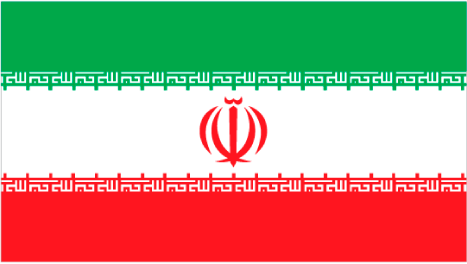To help inspire or plan your trip to Iran, some of its major attractions
for travellers are shown below, including some of the best natural, historical, cultural and adventure sites in the country.
These include all of UNESCO World Heritage Sites for Iran which represent the best
of the world's cultural and natural heritage.
Click on the icons below to focus on specific types of features
(click again to return to all).
|
|
|
|
|
|
|
|
|
|
|
|
 |
|---|---|---|---|---|---|---|---|---|---|---|---|
| Natural | History | Wildlife | Trekking | Cities | Religious Monument | Boat Journey | Rail Journey | Diving | Cultural | Adrenaline | UNESCO WHS |
Cities of interest in Iran
| Tehran | |
|---|---|
Iran's capital is a huge, sprawling metropolis of some 15 million people and its main attractions are its numerous imperial palaces and museums. The Sa'd Abad Palace and Museum complex includes the White Palace, the former summer palace of the Pahlavi royal family, which highlights the opulent lifestyle of the Shah. Golestan Palace comprises several buildings and a beautiful garden and was constructed in the 19th century by the Qajar rulers. The National Museum of Iran houses a huge and impressive collection of historical artefacts from around the country with one building detailing ancient Persian history and another dealing with the Islamic period. The Carpet Museum contains over 100 exquisite Persian rugs while other museums of note include the National Jewellery Museum, the Glass and Ceramics Museum and the Islamic Museum. UNESCO World Heritage Site: Golestan Palace | |
| Esfahan | |
|---|---|
Esfahan is Iran's pearl, one of the finest places in the Islamic world and one of the great destinations in world travel. Although it dates back to the beginning of the Islamic period, Esfahan reached its peak under Shah Abbas the Great when he moved his capital here at the beginning of the 17th century. Esfahan's most impressive site is the enormous and spectacular Royal Square or Meidan Eman, over 80,000 square metres and the second largest city square in the world. The square, built as a royal polo ground and once home to entertainers, preachers and Silk Road caravans, is bordered on each side by four monumental buildings. The Mosque of Sheikh Lotfollah is renowned for its beautiful dome and exquisite tile work. The Ali Qapu Palace was developed from an earlier Timurid palace and was used by the Shah to receive guests and foreign dignitaries. It is renowned for its superb plaster works and paintings and has a balcony overlooking the square. The magnificent Royal Mosque and the Portico of Qaysariyyeh complete the historical masterpieces. The Imperial Bazaar leads from the square to the north, a labyrinth of alleyways selling carpets, sweets and spices, tiles, jewellery and bright clothes. Other buildings of note include Vank Cathedral in the Armenian quarter of Jolfa, Chehel Sotun Palace also known as 40 Columns Palace due to the reflection of its 20 columns in waters of its fountain and the shaking minarets of Minar-e Jonban. The historic bridges of the Zayandeh River include Si o Se Pol (the Bridge of 33 Arches) and the Khaju Bridge. UNESCO World Heritage Site: Meidan Emam, Esfahan | |
| Yazd | |
|---|---|
Yazd is a desert city that was a major centre along the Silk Road and is the centre of Zoroastrianism, Iran's state religion before the arrival of Islam and a belief which predates Christianity. Over 10,000 believers still reside in the city today. Here the Towers of Silence on a hilltop was the traditional Zoroastrian burial ground, where bodies were left to be eaten by vultures. The Zoroastrian Fire Temple has a flame that has burned for over 1,500 years. Yazd is also renowned for its wind towers or badgirs which captured breezes and cooled living quarters below. The old town of Yazd is perfect for exploring on foot amidst the clay brick houses, ancient Islamic buildings and labyrinthine of narrow alleyways. Other notable attractions include the Jameh mosque with its twin 48 metre minarets, the Doulat Gardens and the Amir Chakhmaq mosque. | |
| Shiraz | |
|---|---|
Shiraz is a very atmospheric and romantic city, whose history stretches back to ancient Persia when it was the centre of rule between the Achaemenid era in the 6th century BC and the Sassanian era in the 7th century AD. It is regarded as Iran's cultural centre with the most prestigious universities in the country. The exquisite tombs of the 14th century poets Hafez and Sa'di are set in beautiful gardens and are important places of pilgrimage for Iranians. Other attractions include the 19th century Nasir al-mulk mosque, the beautiful Eram Gardens, the Bazar-e Vakil bazaar and the Naranjestan palace and gardens. | |
| Hamedan | |
|---|---|
Hamedan's history dates back to the 8th century BC when it was known as Ecbatana. It was redesigned as a modern city in 1929 but has a number of historical attractions. These include the Mausoleum of Avicenna, a medieval philosopher, physicist and poet considered to be one of the founders of modern medicine and the tomb of the biblical Esther, the Jewish wife of Persian King Xerxes which was once an important Jewish pilgrimage site. | |


